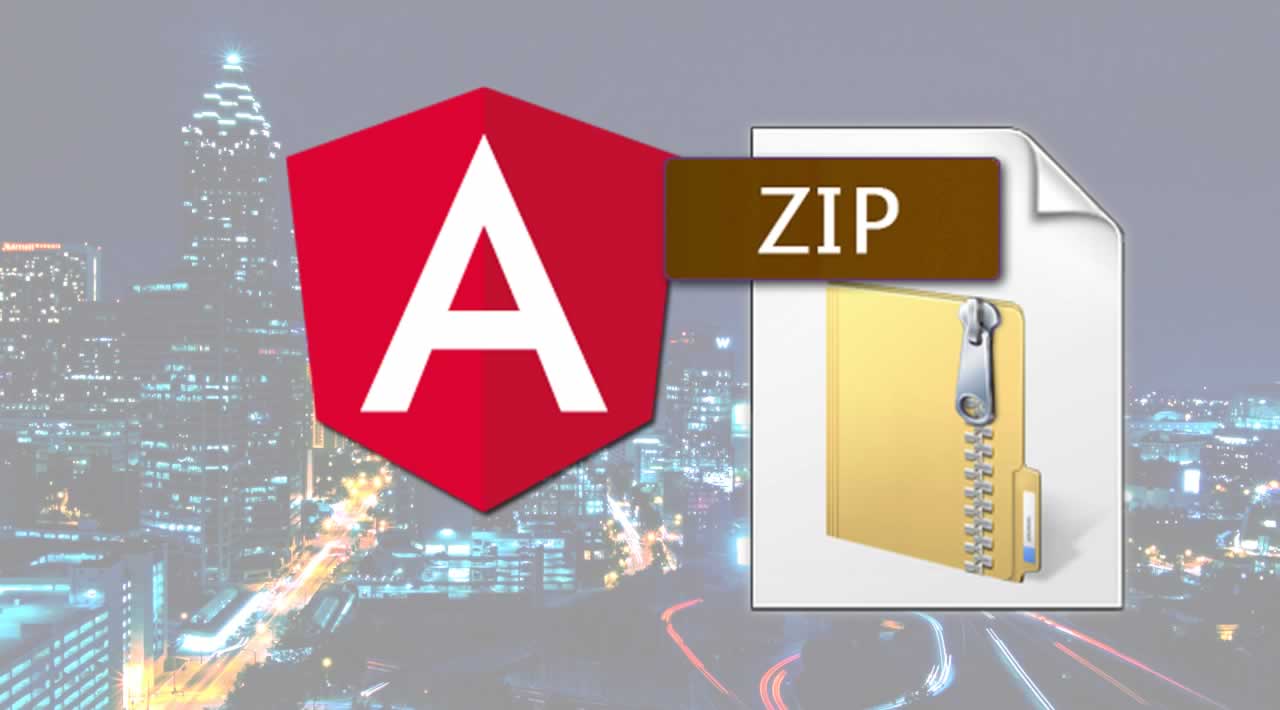| Uploader: | Urmanova |
| Date Added: | 29.04.2020 |
| File Size: | 77.22 Mb |
| Operating Systems: | Windows NT/2000/XP/2003/2003/7/8/10 MacOS 10/X |
| Downloads: | 39481 |
| Price: | Free* [*Free Regsitration Required] |
Download File from Server using Angular 7/8/10/11/12 - Roy Tutorials
26/04/ · 1. Save some files in a static folder on your server2. Serve that file using a GET api: blogger.comad(file_path)3. Create a service that makes an blogger.com() c Author: Rui Wang 17/06/ · Downloading Files. Immagine your If not, the directive gets the file (line#60) as a blob using the Angular’s HttpClient service, creates the URL object out of it (line#63), Author: Lucio Francisco 19/01/ · I was facing this same case today, I had to download a pdf file as an attachment (the file shouldn't be rendered in the browser, but downloaded instead). To achieve that I discovered I had to get the file in an Angular Blob, and, at the same time, add a Content-Disposition header in the response. This was the simplest I could get (Angular 7):Reviews: 3

Angular download file
Downloading files is a common task for web applications. These files could be some PDF, ZIP or any other binary or text-based file that you want to make accessible to your users. Here's how you can download files in Angular either with a rather simple link or JavaScript-based for more control and progress indication, angular download file. The download operator developed in this article is available in the ngx-operators �� library - a collection of battle-tested RxJS operators for Angular.
A simple download link can be easily achieved with plain HTML in Angular. You'll use an anchor tag pointing to the file with the href attribute. The download attribute informs the browser that it shouldn't follow the link but rather download the URL target. You can also specify its value in order to set the name of the file being downloaded.
You can bind any of these attributes with Angular in order to set the URL and filename dynamically:. Older browsers, like the Internet Explorer, might not recognize the download attribute. If there's no download attribute, the filename for your download will solely depend on the HTTP header Content-Disposition sent by the server that's providing the file. The information from this header might also take precedence even if the download attribute is present. Recommended Read: Building a Good Download… Button?
A link-based solution conforms well to HTML standards and lets the browser do most of the work. However, angular download file, if you want more control angular download file the download and would like to display some custom progress indicator you can also download files via Angular's HttpClient.
Angular download file file is best represented as a Blob in the browser:. The Angular download file object represents a blob, which is a file-like object of immutable, raw data -- MDN web docs.
By specifying the responseType option we can perform a GET request returning a blob representing the downloaded file. Let's assume we've got a designated DownloadService doing just that:. A component would then be able to call this service, subscribe to the corresponding observable and eventually save the file like this:.
Here, we're creating an anchor tag programmatically when the blob arrives, angular download file. With URL. createObjectURL we can generate a download link to the blob. Finally, we click the link like the user would've done with a regular browser download link.
After the file is downloaded, angular download file, we'll discard the blob by revoking the object URL we created. This approach is pretty verbose though and might not work smoothly for every browser. Therefore I'd advise you to use the popular library FileSaver. js when saving blobs. The saving then becomes a one-liner:. If you don't like adding a dependency for this and would prefer to use the manual approach shown before, you might as well refactor the code for saving the blob into a separate service.
There you probably want to inject document with Angular's built-in injection token DOCUMENT. You can also create a custom injection token for URL - also see below how we'll do this for FileSaver. By setting the option observe to events while making an HTTP request, we won't just receive the final response body of the request but also get access to intermediate HTTP events, angular download file.
There are multiple kinds of HTTP events in Angular, all consolidated under the type HttpEvent. We also need to explicitly pass the option reportProgress in order to receive HttpProgressEvents. Our HTTP request will eventually look like follows:. Since we don't just want to forward these events to every component, our service has to do some more work. Otherwise our component would have to deal with HTTP specifics - that's what services are for!
Instead let's introduce a data structure representing a download with progress:. A Download can be in one of three states.
Either it hasn't started yet, therefore it's pending. Otherwise it's done or still in progress. We use TypeScript's union types to define the different download states, angular download file. Additionally, a download has a number indicating the download progress from 1 to Once a download is done, angular download file, it will contain a Blob as its content - until then this property is not available, therefore null.
Now we angular download file to abstract from specific Angular download file events to our newly defined data structure, angular download file. This way our components can be decoupled from the underlying network protocol.
Since we're dealing with multiple events coming in over time, a RxJS operator is well suited here - so let's create one! The first step for this will be the creation of type guards helping us to distinguish different HTTP events. This way we can access event-specific fields in a type-safe way.
We'll focus on the events HttpResponse and HttpProgressEvents. They both contain the discriminator field type allowing us to easily return a boolean for the type assertion in our guards.
The guards can be used with a simple if-statement, however, TypeScript will narrow the event type inside the statement block for us:. Based on these guards we can now create our custom operator. It'll leverage scanan operator that allows us to accumulate state for successive values coming through an observable. It takes up to two arguments: First, we provide an accumulator function which will compute the next Download state from the previous one and the current HttpEvent.
Second, we'll pass a seed to scan representing the initial Download state. This seed will angular download file our download being pending without any progress or angular download file. Our accumulator will use the previously defined guard to update the Download state over time with information from the HTTP events:.
When we encounter a HttpProgressEventwe calculate the progress based on the number of bytes already loaded and the total bytes. A download is done when we receive a HttpResponse containing the file contents in its body.
When receiving any other events than HttpProgressEvent or HttpResponsewe won't alter the download's state and return it as it is. This way, for example, we can keep the information in the progress property while other events that won't allow us to compute the progress can be ignored for now.
Anything unclear? Let's finally define our custom operator that's using scan with our accumulator and seed :. Notice that this download operator accepts an optional parameter saver.
Once a HTTP response is received, this function is invoked with the download content from inside the accumulator. This allows us to pass in a strategy for persisting the download to a file without directly coupling the operator to FileSaver.
By keeping FileSaver. js out of our custom operator, the resulting code is more maintainable. The download operator can be tested without somehow mocking the saveAs import see here for corresponding tests. If we apply the same pattern to the service, we'll be able to test it just as angular download file. So let's do that by creating a custom injection token for saveAs in a file called saver, angular download file.
Let's use the Progress Bar from Angular Material to show how far along our download is. The component now only has to assign an observable download to this property:. We can then subscribe to this observable through the AsyncPipe in combination with NgIf. While the download is pending we'll display the progress bar in 'buffer' mode you may also use 'query'angular download file, otherwise the angular download file is determinate.
The bar's value can then easily be applied from Download. Pro Tip : If you need to map something to more than two values inside a template or rather a ternary statement won't do it for you: map the observable to the type you need or use a custom pipe instead of angular download file a component function from the template, angular download file.
Both methods are pretty easy to write, more declarative and perform better. Here's a StackBlitz showing everything in action. The downloaded file is only 3MB, so you might want to enable throttling to see more of the progress bar. I hope this article helped you with your project.
Hire meif you need further support solving your specific problem, angular download file. Sometimes even just a quick code review or second opinion can make a great difference. With Sentry it's easy to log Angular errors server-side. In this example we create a designated service to track errors better than the browser console.
Saving changes automatically to the server improves user-experience. Let's implement autosave with Angular and RxJS for forms, subject services and NgRx. Angular File Download with Progress March 10, angular download file, web development frontend angular. get url{ responseType : 'blob' } } }. Component { createObjectURL blob a. zip' ; a. click ; URL. revokeObjectURL objectUrl ; } } }. import { saveAs } from 'file-saver' ; download { this. zip' }. get urlangular download file, { reportProgress : trueobserve : 'events'responseType : 'blob' }.
File Download with Angular 7 PART 02 (Final)
, time: 18:20Angular download file

17/06/ · Downloading Files. Immagine your If not, the directive gets the file (line#60) as a blob using the Angular’s HttpClient service, creates the URL object out of it (line#63), Author: Lucio Francisco 19/01/ · I was facing this same case today, I had to download a pdf file as an attachment (the file shouldn't be rendered in the browser, but downloaded instead). To achieve that I discovered I had to get the file in an Angular Blob, and, at the same time, add a Content-Disposition header in the response. This was the simplest I could get (Angular 7):Reviews: 3 26/04/ · 1. Save some files in a static folder on your server2. Serve that file using a GET api: blogger.comad(file_path)3. Create a service that makes an blogger.com() c Author: Rui Wang

No comments:
Post a Comment